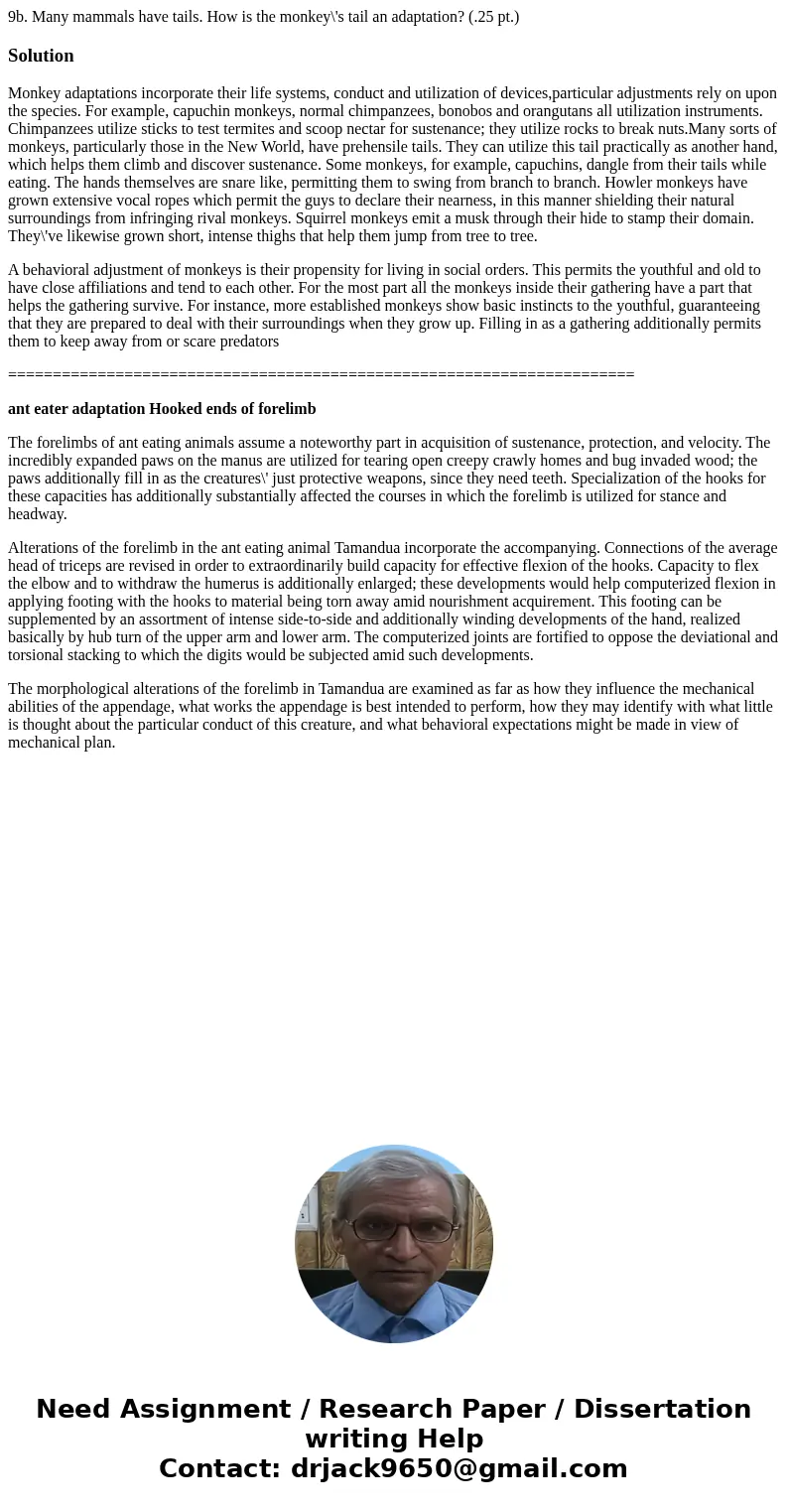9b Many mammals have tails How is the monkeys tail an adapta
Solution
Monkey adaptations incorporate their life systems, conduct and utilization of devices,particular adjustments rely on upon the species. For example, capuchin monkeys, normal chimpanzees, bonobos and orangutans all utilization instruments. Chimpanzees utilize sticks to test termites and scoop nectar for sustenance; they utilize rocks to break nuts.Many sorts of monkeys, particularly those in the New World, have prehensile tails. They can utilize this tail practically as another hand, which helps them climb and discover sustenance. Some monkeys, for example, capuchins, dangle from their tails while eating. The hands themselves are snare like, permitting them to swing from branch to branch. Howler monkeys have grown extensive vocal ropes which permit the guys to declare their nearness, in this manner shielding their natural surroundings from infringing rival monkeys. Squirrel monkeys emit a musk through their hide to stamp their domain. They\'ve likewise grown short, intense thighs that help them jump from tree to tree.
A behavioral adjustment of monkeys is their propensity for living in social orders. This permits the youthful and old to have close affiliations and tend to each other. For the most part all the monkeys inside their gathering have a part that helps the gathering survive. For instance, more established monkeys show basic instincts to the youthful, guaranteeing that they are prepared to deal with their surroundings when they grow up. Filling in as a gathering additionally permits them to keep away from or scare predators
======================================================================
ant eater adaptation Hooked ends of forelimb
The forelimbs of ant eating animals assume a noteworthy part in acquisition of sustenance, protection, and velocity. The incredibly expanded paws on the manus are utilized for tearing open creepy crawly homes and bug invaded wood; the paws additionally fill in as the creatures\' just protective weapons, since they need teeth. Specialization of the hooks for these capacities has additionally substantially affected the courses in which the forelimb is utilized for stance and headway.
Alterations of the forelimb in the ant eating animal Tamandua incorporate the accompanying. Connections of the average head of triceps are revised in order to extraordinarily build capacity for effective flexion of the hooks. Capacity to flex the elbow and to withdraw the humerus is additionally enlarged; these developments would help computerized flexion in applying footing with the hooks to material being torn away amid nourishment acquirement. This footing can be supplemented by an assortment of intense side-to-side and additionally winding developments of the hand, realized basically by hub turn of the upper arm and lower arm. The computerized joints are fortified to oppose the deviational and torsional stacking to which the digits would be subjected amid such developments.
The morphological alterations of the forelimb in Tamandua are examined as far as how they influence the mechanical abilities of the appendage, what works the appendage is best intended to perform, how they may identify with what little is thought about the particular conduct of this creature, and what behavioral expectations might be made in view of mechanical plan.

 Homework Sourse
Homework Sourse